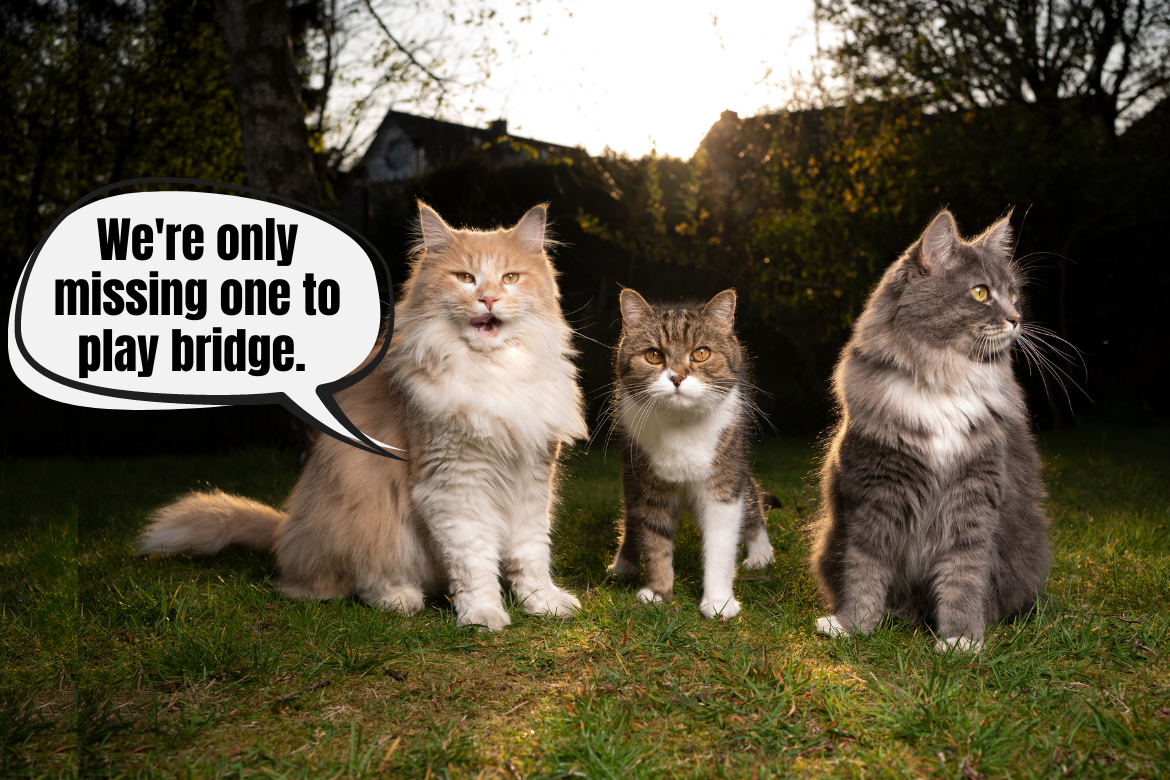They say that cats are always better in pairs, as two cats together make for a more joyful environment. And it’s true – if you can successfully socialize cats and get them to agree with each other, they’ll become the perfect playmates and companions for each other in their daily rituals. However, living with two or more cats under one roof also comes with its challenges. Today, fabCats, let’s discuss some tricks and life hacks to make your life with multiple cats easier. Ready? Come on!
May the cats live in harmony
Regardless of whether you adopt two cats together or introduce a new one later in their lives, ensuring harmony in the feline environment is crucial. Cats are territorial creatures and can live together in groups as long as they have sufficient resources for survival. This means that besides their own food bowls, access to litter boxes, and comfortable beds, organizing your home in a way that allows each cat to have space away from the others is essential. As a cat Carer, how can you provide your feline family with a conflict-free life?
✅ Establish a shared group scent
Cats recognize their space through scents, effectively marking their territory and letting everyone in the area know who owns the space. Both hoomans and all the cats living with us form one group, and our scents combine to create a unique composition that allows cats to understand who belongs and who is an intruder. When introducing a new cat into your home, their scent will be completely foreign to the other feline residents. As cat Carers, we can ensure that the cats don’t immediately go to war with the newcomer but instead gradually get accustomed to their pheromones. Initially, you can exchange scents by swapping blankets, beds, and scratching posts (the new cat gets a bed with the scent of the resident cat, and the resident cat receives something with the scent of the new cat). Later on, you can use the same brush to groom both cats, further enhancing the exchange of pheromones.
✅ Increase the number of cat porta-potties
The golden rule for multi-cat households states that there should be as many litter boxes as there are cats, plus one extra. While this ensures that each cat has access to a litter box at any time, it doesn’t necessarily mean you need to feel like your apartment is surrounded by litter boxes if you have two cats in a small space. If your cats get along well without conflicts that require complete separation, you don’t need a litter box in every possible corner of your home. Instead, consider how to organize the space around the litter box to make it comfortable for all cats.
- If possible, place at least two litter boxes in your home (even if the second one is just a backup for emergencies).
- Position the litter boxes in different areas of your home. Lining them up side by side won’t serve their purpose, and you might as well have one large litter box instead.
- Avoid blind corners. For aesthetic reasons, we often want to hide the litter box in the farthest corner of the apartment, but from the cats’ perspective, it’s the worst possible idea. The litter box should be positioned so that the cat can easily exit from any side and never get trapped in it by another cat. This is especially important when there’s only one cat porta-potty in the house.
- Remember about regular cleaning. It’s crucial regardless of how many cats are living under your roof, but in multi-cat households, hygiene is particularly important. Dirty litter boxes may discourage cats from using them, and unmet needs can lead to conflicts among the furballs.
✅ Schedule playtime
The more cats you have, the more important a structured daily routine becomes. Cats are known for loving a strict schedule – meals at the same time, playtime with their human at the same time each day. For a cat, routine means security – if yesterday’s day went according to a certain plan, and the cat felt happy and content, repeating the same routine today will guarantee the same effect. Who wouldn’t want to live like that! However, when there are two or three cats in the house, each with their own preferred schedule, it’s essential to ensure their routines align as smoothly as possible.
What does this mean in practice?
- Feed the cats at the same time each day, providing each with some privacy during mealtimes. Cats naturally prefer to eat alone, so placing their food bowls in different parts of the kitchen works much better than having them side by side.
- Spend time playing with each cat individually. Just like with eating, cats prefer to hunt and play solo. Engaging in group play may incite unnecessary competition among the cats, leading to conflicts. Conclude each play session with a reward and treat, so the cat feels fulfilled and doesn’t feel the need to chase its feline companion.
Cats living in a group will play with each other, but remember that providing your cat with a playmate doesn’t relieve the cat Carer of the duty to play with the cats. If their daily lives lack the hunting element, cats may eventually turn against each other, with the stronger one hunting the weaker one.
✅ Scratchers are sacred
When it comes to essential items in a feline household, priority goes to food and water bowls, litter boxes, and scratching posts. The latter is crucial for fulfilling the cat’s need to mark territory. Based on years of experience and discussions with you, we find it hard to imagine a scenario in a multi-cat household where only one scratcher is available. That’s not enough! Scratching posts serve not only as a place for claw maintenance and morning gymnastics but also act as signposts where cats can mark their presence and ownership. They’re also vital for napping, playing, and observing the surroundings. The more scratching posts in your home, the better – unless you enjoy a scratched-up couch 🙂
✅ Create peaceful oases around the house
When it comes to cats, occasional conflicts are unavoidable, even in the most harmonious feline groups. Arguments over window perches, favorite scratching posts, and a spot next to the hooman – cats will be cats, and sometimes they need to have disagreements. What works best in such situations is allowing each cat to retreat and chill out away from the other. Ensure that each room has cat beds, scratchers, and hiding spots (like the MIA cat house). Also, keep in mind that cats love vertical space and might need to escape to higher levels at times. Wall shelves and tall scratching posts can help cats better divide their home territory and avoid unexpected conflicts.
What to do when cats start to argue?
Many factors affect the dynamics between cats, some of which we, as cat Carers, may initially overlook. We often assume that if we successfully conducted a full socialization with isolation, and the cats got along perfectly, living together in complete harmony for several years, nothing can disturb their relationship. However, the reality isn’t always that rosy.
Changes in the environment (e.g., moving to a new place), changes in the life situations of household members (e.g., the arrival of a child), aging cats, or health problems – any of these factors can alter a cat’s attitude towards its surroundings. Cats, as we know, are not fond of changes and may feel the need to release their stress by hiding, urinating outside the litter box, attacking other cats in the group, or even attacking humans. These are not issues that can be left without intervention. If one cat loses trust in another, for whatever reason, rebuilding that trust can be just as challenging as the initial introduction. So, if you fear that conflicts between cats are escalating and becoming a threat to one or both felines, separate them, try to identify the cause of aggression, check the health of both cats, and prepare for reintroduction and isolation – either on your own or, for greater safety, with the assistance of an experienced behaviorist. We’re rooting for your success!
Okay, fabCats, it’s time for the moment of truth – how many cats share your four walls? And what are the dynamics in your feline groups? Share your methods for getting your furballs to get along in the comments section.




